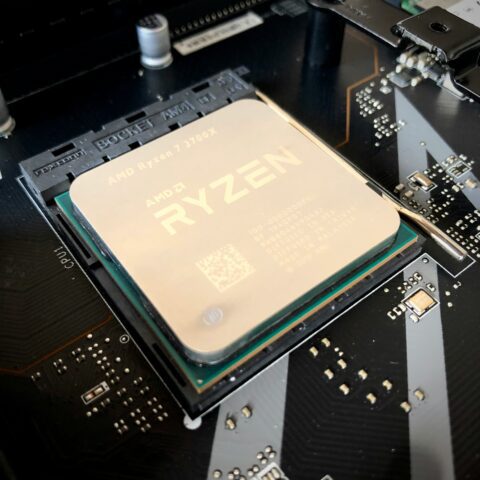Welcome to our blog post on why investing in energy-efficient electronics appliances is a smart move! In today’s world, where climate change and environmental concerns are at the forefront of discussions, it has become increasingly important for individuals to make conscious decisions about their impact on the planet. One area where we can all make a significant difference is through our choice of electronics appliances.
Did you know that energy consumption accounts for a substantial portion of greenhouse gas emissions? By opting for energy-efficient appliances, not only do we reduce our carbon footprint, but we also save money in the long run. Yes, you heard that right – these eco-friendly investments prove to be cost-effective as well! So let’s dive into the details and explore why choosing energy-efficient electronics appliances is indeed a smart move.
The Impact of Energy Consumption on the Environment
Energy consumption plays a significant role in the environmental challenges we face today. The burning of fossil fuels to generate electricity releases harmful greenhouse gases into the atmosphere, contributing to global warming and climate change. Additionally, the extraction and production of these fuels have detrimental effects on ecosystems and wildlife habitats.
The excessive use of energy also puts a strain on natural resources such as water, coal, oil, and gas. These resources are finite and non-renewable, meaning that their depletion will have long-term consequences for future generations. Furthermore, energy production often involves practices with negative environmental impacts like mining or drilling.
Another factor to consider is the pollution caused by traditional power plants that rely on fossil fuels. Besides emitting carbon dioxide (CO2), they produce other pollutants such as sulfur dioxide (SO2) and nitrogen oxides (NOx). These pollutants contribute to air pollution, smog formation, acid rain, and health issues for both humans and animals.
Reducing our energy consumption through the use of energy-efficient electronics appliances can help mitigate these environmental impacts. By opting for appliances that consume less electricity without compromising performance or functionality, we can significantly reduce greenhouse gas emissions associated with electricity generation while conserving precious natural resources.
It’s important to note that every small step towards using more sustainable technologies counts – from switching off lights when not in use to investing in efficient appliances throughout our homes or offices. By being mindful consumers who prioritize energy efficiency in our choices, we actively contribute towards building a greener future for ourselves and generations yet to come.
Benefits of Energy-Efficient Electronics Appliances
When it comes to our household appliances, energy efficiency is a topic that should not be ignored. Investing in energy-efficient electronics appliances can bring about numerous benefits for both the environment and your wallet.
Energy-efficient appliances consume less electricity than their traditional counterparts. This means that they are able to perform the same tasks while using less power, resulting in reduced greenhouse gas emissions and a smaller carbon footprint.
In addition to being environmentally friendly, these types of appliances also offer significant cost savings in the long run. Although their upfront costs may be slightly higher than conventional models, their lower energy consumption translates into lower utility bills over time. By replacing outdated appliances with more efficient ones, you can potentially save hundreds of dollars annually on your electricity bill.
Moreover, many energy-efficient electronics come equipped with advanced features designed to further reduce power usage without compromising performance. For example, some refrigerators have sensors that adjust temperature settings based on usage patterns or self-cleaning cycles that use less water and detergent.
Furthermore, investing in energy-efficient electronics doesn’t mean sacrificing functionality or style. There is now a wide range of products available on the market, from smart thermostats and LED lighting to high-efficiency washing machines and televisions with Energy Star ratings.
By choosing the right appliance for your needs – one that suits your lifestyle and preferences – you can make a positive impact while enjoying all the modern conveniences you desire.
Cost Savings in the Long Run
Cost Savings in the Long Run
When it comes to investing in energy-efficient electronics appliances, one of the major advantages is the potential for significant cost savings in the long run. While these appliances may have a slightly higher upfront cost compared to their non-energy efficient counterparts, they more than make up for it through reduced energy consumption.
By opting for energy-efficient appliances, you can significantly lower your monthly utility bills. Appliances such as refrigerators, air conditioners, and washing machines consume a considerable amount of electricity on a daily basis. By choosing models that are designed with energy efficiency in mind, you can reduce your overall electricity usage and ultimately save money over time.
In addition to lower operating costs, many energy-efficient electronics also come with extended warranties or rebates from manufacturers or government programs. This means that not only will you be saving money on your monthly bills but also potentially avoiding costly repairs or replacements down the line.
Furthermore, by investing in energy-efficient appliances now, you are future-proofing yourself against rising electricity prices. As the demand for electricity continues to increase and resources become scarcer, utility companies often pass on these costs to consumers. However, by using less electricity thanks to your efficient appliances, you’ll be shielded from some of these price hikes.
So while it’s true that initially purchasing an energy-efficient appliance might seem like a bit more of an investment than buying its traditional counterpart; when considering long-term cost savings and benefits such as extended warranties and protection against rising utility prices – going green just makes financial sense!
Types of Energy-Efficient Electronics Appliances to Consider
When it comes to energy-efficient electronics appliances, there are a wide variety of options available that can help you reduce your energy consumption and make a positive impact on the environment. Here are some types of appliances to consider:
1. Energy-Efficient Refrigerators: These appliances use advanced insulation and compressor technologies to consume less energy while keeping your food fresh. Look for models with the ENERGY STAR label, which indicates that they meet strict efficiency guidelines.
2. Smart Thermostats: These devices allow you to control your heating and cooling systems remotely, optimizing energy usage based on your preferences and schedule. They also provide insights into how much energy you’re using, helping you make more informed decisions about reducing consumption.
3. LED Lighting: LED bulbs use up to 80% less energy than traditional incandescent bulbs and can last significantly longer. Switching to LED lighting throughout your home can lead to significant energy savings over time.
4. Energy-Efficient Washing Machines: Look for washing machines with high-efficiency ratings that use less water and electricity per load. Front-loading machines tend to be more efficient than top-loading ones as they require less water.
5. Energy-Efficient Air Conditioners: Opt for air conditioners with high Seasonal Energy Efficiency Ratio (SEER) ratings, as these units are designed to consume less electricity while maintaining comfortable indoor temperatures.
By investing in these types of energy-efficient electronics appliances, you not only save money on utility bills but also contribute towards reducing greenhouse gas emissions and conserving natural resources – all while enjoying the same level of convenience and comfort in your daily life!
How to Choose the Right Energy-Efficient Appliance for Your Needs
When it comes to choosing the right energy-efficient appliance for your needs, there are a few key factors to consider. First and foremost, you’ll want to evaluate the energy efficiency rating of each appliance you’re considering. Look for appliances with high Energy Star ratings, as these have been certified by the government as being highly efficient.
Next, think about your specific needs and usage patterns. For example, if you use your dishwasher frequently, look for one that has adjustable settings or features like a half-load option. This way, you can optimize its usage and minimize unnecessary water and energy consumption.
Additionally, it’s important to consider the size of the appliance in relation to your household’s needs. Purchasing an oversized refrigerator or washing machine may result in wasted space and higher energy usage than necessary.
Don’t forget about maintenance and repair costs when choosing an energy-efficient appliance. Some brands offer longer warranties or have better reputation for reliability than others.
By carefully evaluating these factors before making a purchase decision,you can ensure that you choose an energy-efficient appliance that not only meets your needs but also helps reduce your environmental impact.
Government Incentives for Energy-Efficiency Investments
Government Incentives for Energy-Efficiency Investments
When it comes to making the switch to energy-efficient electronics appliances, the government has recognized the importance of encouraging individuals and businesses to invest in these technologies. As a result, many countries offer various incentives to motivate consumers to choose energy-efficient options.
One common incentive is tax credits or rebates offered by governments. These programs allow individuals or businesses that purchase energy-efficient appliances to receive a percentage of their purchase price back in the form of a tax credit or rebate. This not only helps offset the initial cost but also serves as an added incentive for choosing energy efficiency.
Another type of incentive is grants provided by governments specifically targeted towards energy-efficiency investments. These grants are often available for both residential and commercial projects and can help cover some or all of the costs associated with upgrading to energy-efficient appliances.
In addition, some utilities companies offer incentives such as discounted rates on electricity bills for customers who use certain types of energy-efficient appliances. This encourages consumers to make sustainable choices while also helping them save money in the long run.
Furthermore, governments may provide financial support through low-interest loans or financing options for those looking to invest in energy-efficient electronics appliances. This makes it more accessible for individuals and businesses alike to make environmentally conscious decisions without worrying about upfront costs.
By offering these incentives, governments are actively promoting sustainability and reducing carbon emissions on a larger scale. They understand that investing in energy efficiency not only benefits our wallets but also contributes towards mitigating climate change and protecting our planet’s resources.
Taking advantage of these government incentives allows us as consumers to play an active role in creating positive change while reaping economic benefits at the same time. It’s a win-win situation that empowers us all towards a greener future!
Conclusion: Making a Positive Impact with your Purchases
Conclusion: Making a Positive Impact with your Purchases
Investing in energy-efficient electronics appliances is not only a smart move for your wallet but also for the environment. By reducing energy consumption, you can significantly contribute to mitigating climate change and preserving our planet for future generations.
The benefits of energy-efficient appliances are numerous. Not only do they consume less electricity, but they also perform their functions just as effectively as their non-energy-efficient counterparts. This means that you can enjoy the same level of comfort and convenience while minimizing your carbon footprint.
One of the most significant advantages of choosing energy-efficient appliances is the long-term cost savings. While these products may have a higher upfront cost compared to traditional ones, their reduced energy consumption will result in lower monthly utility bills over time. In addition, many governments offer incentives such as tax credits or rebates to encourage consumers to invest in energy efficiency.
When considering which appliance to purchase, it’s essential to look out for specific features that indicate its energy-efficiency. These include Energy Star ratings, which signify that the product meets strict guidelines set by government agencies regarding power consumption and performance standards.
Another factor to consider is the size and capacity of the appliance relative to your needs. Choosing an appropriately sized unit ensures optimal performance without wasting excess resources.
By making conscious choices when it comes to purchasing electronic appliances, we can collectively make a positive impact on our environment. Small changes at an individual level can lead to significant effects globally if more people adopt these practices.
So next time you’re shopping for new electronics appliances, think beyond functionality and aesthetics; consider how each purchase contributes towards conserving resources and reducing greenhouse gas emissions. Let’s make sustainability a top priority in our buying decisions and pave the way towards a greener future!







